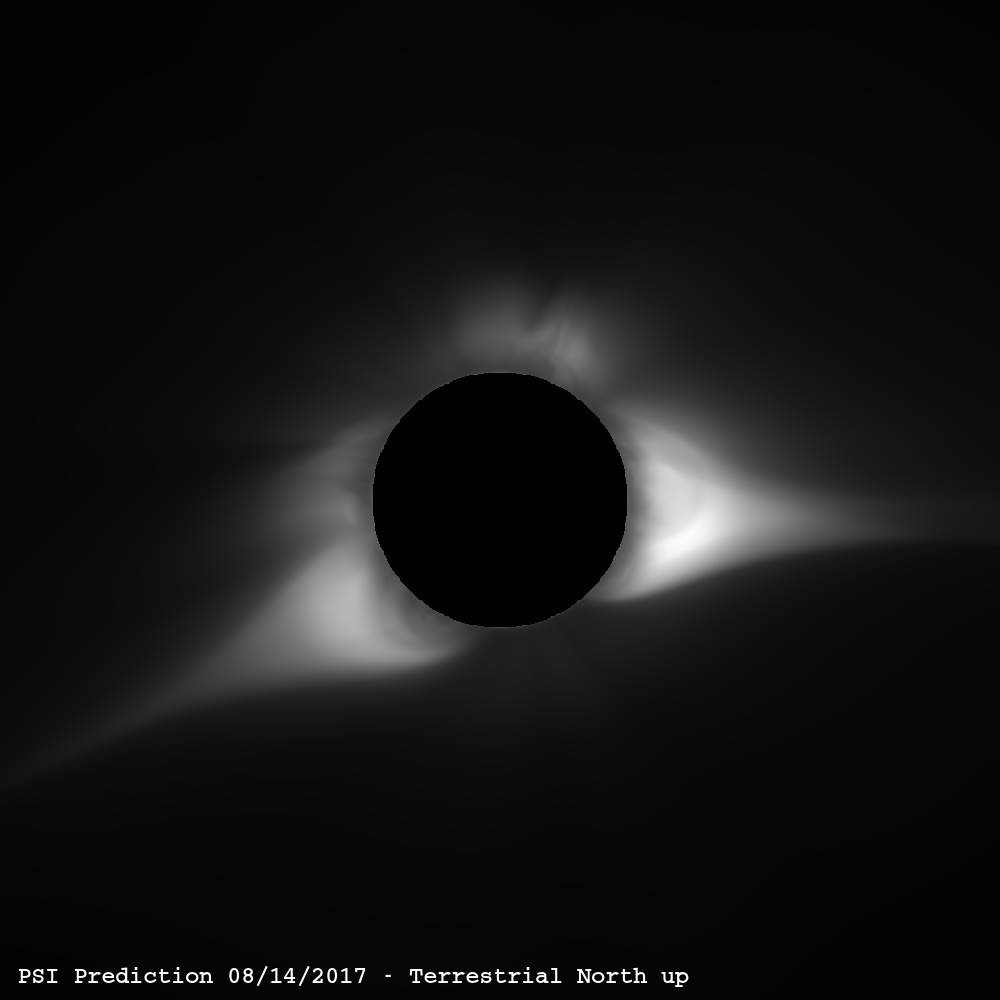NASA tweeted a link to an article today that takes a look at how scientists fared in predicting in advance how the Sun's corona would appear during the Great American Eclipse this summer using data from NASA resources. The corona (Latin for crown) is the star of the show, the ethereal white light that emerges round an occulted Sun. This super-hot atmosphere of our nearest star is dynamic, being shaped and sculpted by the strong magnetic fields emitted by the Sun.
Scientists used magnetic field information from NASA's Solar Dynamics Observatory to arrive at the prediction. It was far from a trivial model - the "simulation required thousands of processers and took about two days of real time to complete"!
Below was the best guess by Predictive Science, Inc. Below that is my image of the corona, a combined shot using HDR software to bring out the full details. If we rotate the prediction counter-clockwise a bit it really does give a pretty good outline of the shape we saw on August 21st - well done folks!
Scientists used magnetic field information from NASA's Solar Dynamics Observatory to arrive at the prediction. It was far from a trivial model - the "simulation required thousands of processers and took about two days of real time to complete"!
Below was the best guess by Predictive Science, Inc. Below that is my image of the corona, a combined shot using HDR software to bring out the full details. If we rotate the prediction counter-clockwise a bit it really does give a pretty good outline of the shape we saw on August 21st - well done folks!




